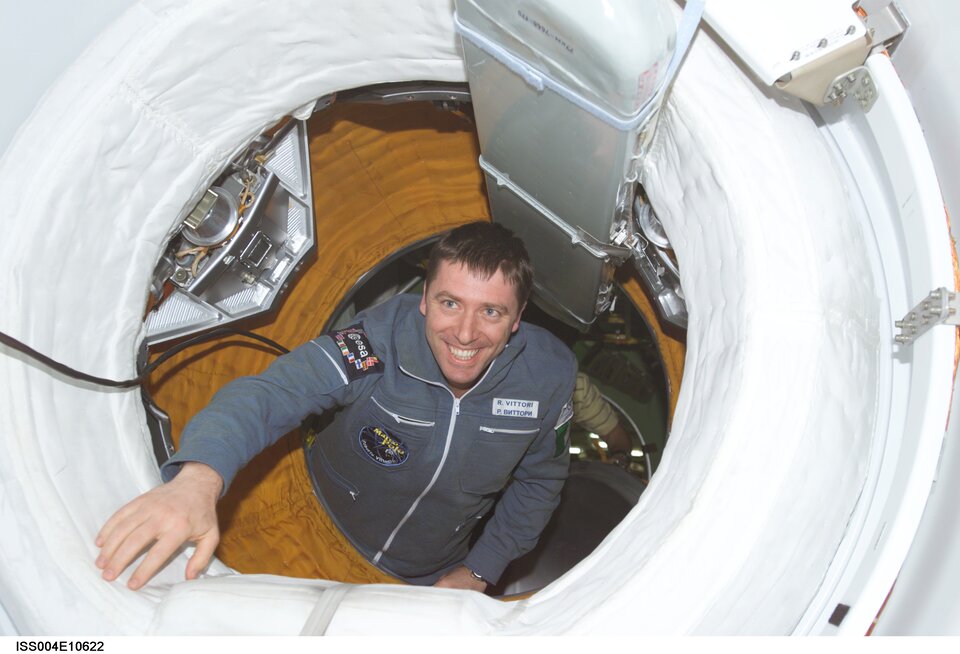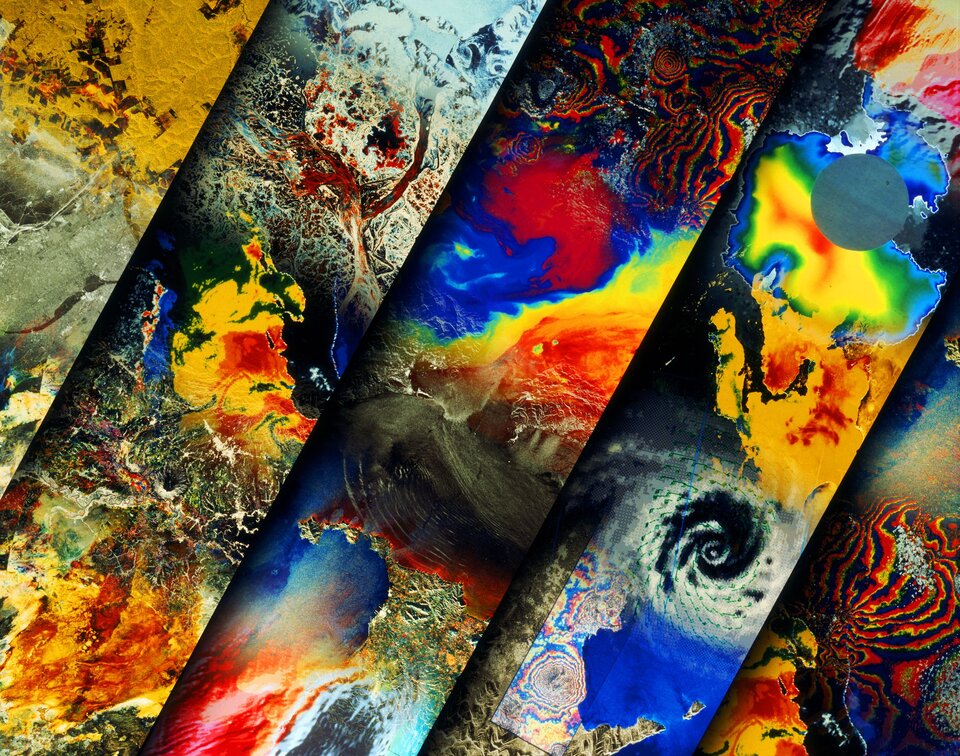Space and my daily life
by Carike Bosman (17 years old)
Hoërskool Eldoraigne
Pretoria, South Africa
Twinkle, Twinkle little star, how I wonder what you are. Up above the world so high, like a diamond in the sky.
Fascination, wonder and even obsession with space and in particular human space travel, have existed throughout many generations
Mankind's tireless dreams and ideas on reaching the mystical "twinkling stars" started long before Leonardo da Vinci succeeded in designing his first pair of wings.

But gravity was our nemesis that kept us locked within the bounds of our earth's atmosphere.
When Neil Armstrong took his first step on the moon's surface, I was greatly disappointed that he didn't say: "Gravity Sucks"!
The first trips by astronauts into space in the 1960's lasted only a few hours. The rivalry between the US and the Soviet Union to place a man on the moon, led to more sophisticated spacecraft and propelling means. This, originally politically driven agenda, had the advantage of making the world aware that humankind can achieve wonders if motivated. Even placing a man on the moon – then an astonishing feat – never thought possible before.
Space travel changed its face from a platform to score "political" points, perform technological marvels, and to boast our ego, to a platform for performing scientific experiments, developing and testing new technologies and creating commercially viable technology to be used on mother earth for our benefit.

Space contributes greatly to our society today. Not only does it advance scientific knowledge but it also improves man's daily living on earth. Until recently, astronomers did not have the tools to probe the universe on its largest scale. Now with improved telescopes, satellites and receivers, they can study the history and the wonders of our universe. The universe tells us its history and helps us better understand our origin. When we look at distant galaxies we see that they are moving apart: The universe is expanding. If we could rewind the universe, we would see the galaxies moving together and find that our universe had a definite beginning. The big bang. Will it then have a definite end ? The big crunch.

Satellites are launched for a very practical reason: to benefit us. A crucial part of information dissemination is due to communication satellites. Thirty years ago, routine international phone calls were virtually unheard of and TV stations relied on aircraft to bring then the latest news pictures from the other side of the world. Today communication satellites are sending millions of phone calls and broadcasting hundreds of TV channels – nonstop. If satellites didn't exist, we wouldn't even have seen Mark Shuttleworth embarking on his exciting journey into space. Even worse… I wouldn’t have been able to watch “FRIENDS” !
Earth observation satellites monitor environmental activities so that natural, and manmade disasters, can be monitored, foreseen and prevented or minimized. These activities include disasters such as forest fires, volcano eruptions, floods, deforestation and open mining activities.
Meteorological and oceanographic monitoring satellites are measuring ocean temperatures and guide fishing vessels for improved harvests and contribute to more accurate weather forecasting. The El-niño effect could not have been discovered without satellite monitoring and now is a common weather phenomenon used to guide farming activities from South America, Africa and to Australia. Now you can even be sure not to organise a picnic when it's going to snow tomorrow.
This is just the tip of the iceberg.
High imagery equipment on the latest satellites allow us to view all features on earth, from objects of many square kilometres in size, down to objects smaller than even one square meter. (And I thought Big Brother was an original idea !)

These objects might include road networks, airports, canals, coastal features, danger points, drainage basins, stream networks, mineral resources, population density, sea-ice, vegetation, wetlands, desert areas and are limited literally only by our imagination.
Not only do we utilise satellites in space to our advantage, we also now use space as a laboratory for accelerated experimentation, which otherwise would have taken us much longer to perform.
Since I was a little girl, I always thought about what I would like to do and discover in space someday. When I finished fighting UFO’s in my imagination, really terrific ideas kept me awake at night. One of my favourite ideas is all about apples, my favourite fruit. Here on earth, apples grow on trees until they are approximately the size of a fist. They then become too heavy for their stems, and fall towards the earth. In space that’s not possible, because gravity is not present. Imagine apples growing to the size of beach balls, growing uninhibited by gravity, growing and growing until we select to pick them. Only one apple a year to keep the doctor not near.

Studies on osteoporosis are currently being conducted in space. When astronauts are subjected to zero gravity, their bones lose calcium and strength, and their muscles lose mass. This process happens rapidly so that the effect on their bodies can be described as artificial, accelerated ageing. Thus, space can be used to test potential solutions for combating this disabling disease. The same is done to find solutions for cardio-vascular problems. Therefore space is once again the perfect test-bed for an accelerated testing environment.
Space really makes a huge contribution to our daily lives, not just to know what the weather will be like tomorrow, not just to test new technology, and not just to perform scientific experimentation. When Mark Shuttleworth became the first African in space, something else was achieved: People across Africa were reminded again that they are allowed to dream, to work towards their dreams and that their dreams can come true. We can achieve wonders, the extra-ordinary, if we set our minds to it. We can.

